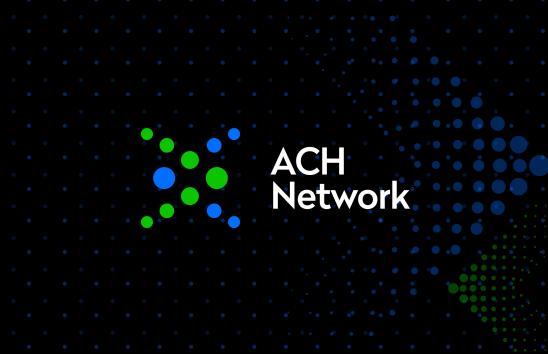RISK MANAGEMENT TOPICS – Company Entry Descriptions
These two Rule amendments on Company Entry Descriptions become effective on March 20, 2026 and are part of a larger Risk Management package intended to reduce the incidence of successful fraud attempts and improve the recovery of funds after frauds have occurred.
Details
Standardized uses of the Company Entry Description can help parties in the ACH Network identify, monitor and count the volume of payments for specific purposes; and can help manage risk.
Included in this portion of the Risk Management Rule amendments are two new defined Company Entry Descriptions PAYROLL and PURCHASE.
Technical
Effective date of March 20, 2026 for both amendments
These are “no later than” dates, Originators may begin using the descriptions as soon as practical.
Standard Company Entry Description – PAYROLL
This rule establishes a new standard description for PPD Credits for payment of wages, salaries and similar types of compensation. The Company Entry Description field must contain the description PAYROLL.
- RDFIs that monitor inbound ACH credits will have better information regarding new or multiple payroll payments to an account.
- A standard description for payroll payments can help support RDFI logic to provide or suppress early funds availability.
- The amendment is intended to reduce the incidence of fraud involving payroll redirections.
Standard Company Entry Description – PURCHASE
This amendment establishes a new standard description for e-commerce purchases; the Company Entry Description field must contain the description PURCHASE.
Language for the definition of e-commerce purchases:
- “For this purpose, an e-commerce purchase is a debit Entry authorized by a consumer Receiver for the online purchase of goods, including recurring purchases first authorized online. An e-commerce purchase uses the WEB debit SEC Code, except as permitted by the rule on Standing Authorization to use the TEL SEC Code.”
Language has also been added to disclaim obligation on the part of ODFIs to “police” Originators’ correct use
- “The ODFI has no obligation to verify the presence or accuracy of the word “PURCHASE” as a description of purpose.”
Impact
Standard Company Entry Descriptions
Effective date of March 20, 2026 for both amendments
- All standard Company Entry Descriptions in this set of Rule amendments are proposed to become effective on the same date.
- These are “no later than” dates, Originators may begin using the descriptions as soon as practical.
Anticipated Benefits
- Improved, targeted risk mitigations and tools may be utilized as participants are able to better identify certain purposes of transactions.
- For payroll, can help support RDFI transaction monitoring and logic regarding funds availability.
- For e-commerce purchases, enables identification of such transactions.
- Standardized use of data can help parties manage risk and improve ACH quality.
Potential Impacts
- Originators/Third-Party Service Providers/ODFIs of these types of transactions will need to update their systems to utilize the required Company Entry Description(s).
- RDFIs may choose to take advantage of intelligence enabled by new descriptors, but they would not be required to act as a result of these descriptions.
FAQs Section
Is use of the new Company Entry Description “PAYROLL” mandatory for all Originators?
Yes. Originators will be required to use the new description “PAYROLL” for all PPD credits for the payment of wages, salaries, or other similar types of compensation no later than March 20, 2026. This is a “no later than” effective date. Originators are encouraged to adopt this description for all types of compensation payments as soon as is practical.
Does this requirement also apply to Originators with contract (1099) employees?
Yes. This requirement applies to Originators of all types of compensation payments, regardless of the status of the employment relationship (i.e., employee, contract employee, other).
Use of the term “PAYROLL” is intended for descriptive purposes only, to help identify compensation payments to RDFIs in their efforts to reduce the incidence of fraud involving payroll redirections.
Originators and ODFIs transmitting entries with this entry description make no representation or warranty to the RDFI or to the Receiver regarding the Receiver’s employment status.
Why is the new “PAYROLL” descriptor required?
As ACH participants are better able to identify certain types and purposes of ACH payments, they may be able to use and improve targeted risk mitigation practices and tools. By standardizing certain data within ACH payments for payroll and other types of compensation, RDFIs that monitor inbound ACH credits will have better information to identify new or multiple payroll payments to a particular account. A standard description for these types of payments can help support RDFI logic to provide or suppress early funds availability and support other practices intended to reduce the incidence of fraud involving payroll redirections.
For payroll and other compensation payments, is the Originator permitted to utilize the remaining characters in the Company Entry Description field for additional descriptive purposes?
Yes. Originators initiating payroll and other compensation payments are required to include “PAYROLL” within the leftmost 7 characters of the Company Entry Description field. At the Originator’s discretion, it may utilize the remaining 3 characters for additional descriptive purposes.
Examples: PAYROLL
PAYROLL 02
PAYROLL424
PAYROLLEMP
Are RDFIs required to monitor for and act on PPD credits that bear the descriptor “PAYROLL?”
No. An RDFI may choose to take advantage of intelligence enabled by the use of the PAYROLL descriptor, but the RDFI is not required to act on PPD entries as a result of this description.



